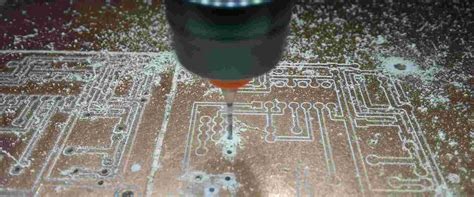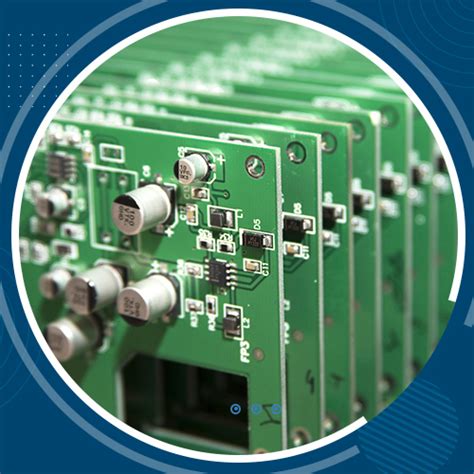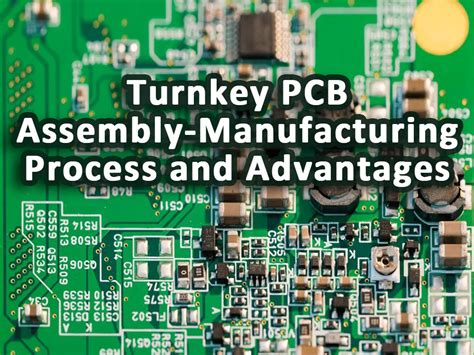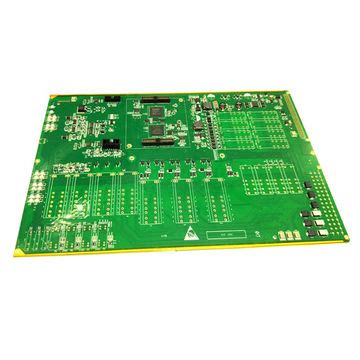Unleashing Innovation: The Future of Arlon PCB Technologies
Key Takeaways
In the rapidly evolving field of pcb manufacturing, the advancements within Arlon PCB technologies stand out significantly. You’ll discover that if you’re seeking a reliable solution for high-frequency applications, high-performance laminates from Arlon could be your answer. These laminates not only enhance the overall efficiency and reliability of your printed circuit boards but also make a substantial difference in processes handled by pcb manufacturing companies. As you navigate the world of pcbs, keep in mind that understanding the pcb manufacturing cost can greatly influence your materials selection and ultimately impact the success of your pcb manufacturing business. By embracing innovative materials that Arlon offers, you not only stay ahead of industry trends but also unlock new potential for applications that require unmatched standards in performance and care.
Introduction to Arlon PCB Technologies: A Legacy of Innovation
In the realm of PCB manufacturing, Arlon PCB technologies stand out as a testament to the evolution of printed circuit board solutions. You may find that these advanced high-performance laminates are crucial in enhancing the overall efficiency and reliability of electronic systems. By utilizing innovative materials specifically designed to meet the rigorous demands of high-frequency applications, Arlon has established a legacy that resonates within the industry. As you explore the landscape of pcb manufacturing companies, it becomes evident that understanding these materials is essential for any pcb manufacturing business aiming to stay competitive. The emphasis on performance and durability not only influences product choices but also directly impacts the pcb manufacturing cost; thus, investing in Arlon’s technologies can lead you toward long-term savings and enhanced product reliability. With a focus on innovation, Arlon continually pushes boundaries, ensuring that your designs can leverage cutting-edge materials for optimal performance in diverse applications. For more details about PCB solutions, you can visit Andwin PCB.
The Evolution of High-Performance Laminates
The landscape of high-performance laminates has undergone significant transformation, largely driven by the increasing demands of modern pcb manufacturing practices. As you delve into the innovations surrounding Arlon PCB technologies, you will notice how these advanced materials have been tailored to address specific high-frequency applications. This evolution not only stems from technological advancements but also reflects a broader understanding of the requirements set forth by pcb manufacturing companies.
Arlon’s laminates now feature enhanced dielectric properties, enabling superior signal integrity and thermal performance. These advancements are crucial in today’s fast-paced electronics landscape where the rates of failure can be directly linked to material decisions made during the pcb manufacturing business processes. By utilizing state-of-the-art materials, you can optimize your designs that will ultimately reduce pcb manufacturing costs, ensuring that quality and efficiency go hand in hand. This focus on performance and reliability underscores a shift from traditional solutions towards innovative materials, thereby reshaping how laminates contribute to overall circuit functionality. As these high-performance laminates continue to evolve, they pave the way for even more advanced applications, reinforcing your position in this competitive industry.
Understanding High-Frequency Applications in PCB Design
In the realm of pcb manufacturing, understanding the nuances of high-frequency applications is essential for achieving optimal performance. As technology continues to advance, the demand for high-performance laminates and innovative materials becomes increasingly significant. You may find that the characteristics of these materials can drastically affect signal integrity, which is crucial for your designs. When dealing with high-frequency signals, factors such as dielectric constant, loss tangent, and thermal properties come to the forefront. Utilizing specialized materials can markedly reduce signal loss and interference, enhancing overall reliability in your printed circuit boards (PCBs). Additionally, choosing the right pcb manufacturing companies that prioritize these advancements can lead to better outcomes in your projects. It’s essential to analyze potential pcb manufacturing costs carefully, as investments in quality materials could translate into smoother operation and longevity of your devices. Ultimately, how you approach selection and collaboration within the pcb manufacturing business can significantly impact both performance and efficiency in high-frequency applications.
Innovative Materials: Enhancing Efficiency and Reliability
In the realm of Arlon PCB technologies, the use of innovative materials plays a crucial role in enhancing performance, particularly in pcb manufacturing processes. By utilizing high-performance laminates specifically designed for high-frequency applications, you can achieve remarkable efficiency and reliability. These materials are engineered to withstand the demanding requirements of modern electronic devices, where signal integrity and thermal management are paramount. When evaluating pcb manufacturing companies, consider those that prioritize advanced material sciences as they often lead to significant reductions in pcb manufacturing costs while maximizing performance. The investment in innovative materials is not just a business decision; it’s a step towards ensuring your products meet the rigorous standards expected in today’s technology-driven market. As you explore the landscape of the pcb manufacturing business, you’ll find that integrating these specialized materials will enable you to deliver superior products that stand out for their reliability and efficiency, ultimately fostering innovation in your projects. Emphasizing quality over mere cost-effectiveness can lead to long-term benefits, laying a solid foundation for future advancements in PCB design and application.
Comparing Arlon PCB Materials with Traditional FR-4
When reviewing Arlon PCB materials, it’s essential to contrast them with traditional FR-4 laminates to understand their unique advantages. FR-4, being one of the oldest and most widely used materials in PCB manufacturing, offers good performance for many electronic applications due to its relative low cost and ease of processing. However, as technology advances, the demand for higher frequencies and improved performance has led to the adoption of more specialized materials such as those developed by Arlon.
Unlike traditional FR-4, which may struggle with signal integrity at elevated frequencies, Arlon’s high-performance laminates are specifically engineered to minimize loss and enhance thermal stability. You might find that while the PCB manufacturing cost of Arlon materials is generally higher, this investment pays off in applications requiring precision and reliability, especially in sectors such as telecommunications and aerospace.
“Investing in quality materials can drastically reduce long-term operational costs by minimizing failures and ensuring product longevity.”
Thus, choosing advanced Arlon PCBs over conventional FR-4 can be a strategic move for your business or project. This is particularly relevant if you’re partnering with savvy PCB manufacturing companies that understand the nuanced demands of your applications. As you weigh your options, consider how the enhanced properties of Arlon PCB materials can drive efficiency in your specific projects while ensuring that you stay within budget constraints related to the overall PCB manufacturing business landscape.
Manufacturing Processes for Optimal Performance
The pcb manufacturing process plays a pivotal role in ensuring the optimal performance of Arlon PCB technologies. By utilizing high-performance laminates and innovative materials, you allow for the production of circuit boards that are not only efficient but also highly reliable for high-frequency applications. In your pursuit of excellence, understanding the nuances of the pcb manufacturing business becomes essential. Processes such as layering, drilling, and etching require precision and expertise, particularly when handling materials that exceed standard FR-4 specifications. When collaborating with pcb manufacturing companies, it’s crucial to explore their capabilities in utilizing advanced technology to minimize manufacturing costs while maximizing board performance. Each step in the pcb manufacturing workflow contributes significantly to the overall integrity and functionality of your printed circuit boards. As you navigate this sector, prioritizing these processes will enable you to leverage Arlon’s innovative solutions fully and meet today’s demands for reliability and efficiency in electronic design.
Future Trends in Arlon PCB Technologies
As you look towards the horizon of Arlon PCB technologies, it’s vital to recognize the shifts that are shaping the pcb manufacturing landscape. The future promises enhanced performance through the development of more robust high-performance laminates tailored for high-frequency applications. This evolution is largely driven by emerging demands in sectors like telecommunications and automotive, where reliability and efficiency are paramount.
Innovative materials will be at the forefront of these advancements, allowing pcb manufacturing companies to produce solutions that not only meet but exceed current standards. The integration of materials that resist thermal and mechanical stress while maintaining electrical integrity will become increasingly common. You’ll find that these innovations not only optimize signal integrity but also reduce overall pcb manufacturing cost, thereby proving beneficial for both manufacturers and end-users.
In a competitive pcb manufacturing business, staying ahead means investing in cutting-edge technology that accommodates the rapid evolution of electronics. As you explore various options, it’s essential to compare existing Arlon material solutions against traditional FR-4 types to appreciate their advantages fully. The way forward will undoubtedly be defined by these evolutionary changes, allowing for more sophisticated and high-performance printed circuit board applications in every industry where precision is critical.
| Key Future Trends | Impact on PCB Manufacturing |
|---|---|
| Advanced High-Performance Laminates | Increased efficiency and performance |
| Innovative Material Developments | Enhanced reliability and reduced costs |
| Adoption of Eco-friendly Materials | Compliance with global sustainability standards |
Therefore, as you engage with future Arlon PCB technologies, remember that embracing these trends will be essential for achieving optimal performance in your designs and meeting market demands effectively.
Case Studies: Successful Applications of Arlon PCBs
In various industries, the utilization of Arlon PCBs has led to substantial improvements in performance and reliability. For instance, in the aerospace sector, companies have adopted high-performance laminates from Arlon to ensure that their products can withstand the demanding conditions of high-frequency applications. These laminates showcase exceptional thermal stability and low loss characteristics, which are crucial for electronic systems that require unwavering performance under pressure. Additionally, the cutting-edge materials provided by Arlon have enabled pcb manufacturing companies to create lightweight yet highly effective circuit boards that meet stringent industry standards. This remarkable advancement not only addresses cost-efficiency—a key concern in the pcb manufacturing cost equations—but also supports innovative designs that can enhance operational effectiveness. Furthermore, by leveraging their expertise in pcb manufacturing business, these companies have been able to reduce production times while simultaneously improving the end product’s reliability, establishing best practices grounded in successful case studies. Thus, you can see how Arlon PCB technologies are not merely components; rather, they are integral to pioneering advancements across various sectors through tangible applications and outcomes.
Conclusion
In the ever-evolving realm of Arlon PCB technologies, the innovation and advancements in high-performance laminates cannot be overstated. As you delve into the intricacies of pcb manufacturing, you will discover that companies are increasingly prioritizing materials that enhance both efficiency and reliability. With a focus on high-frequency applications, pcb manufacturing companies are integrating innovative materials that not only meet the stringent demands of modern electronics but also optimize cost-effectiveness. The emphasis on Arlon PCB solutions is driving a shift in the way you approach pcb manufacturing cost, fostering a more informed selection process that champions high-quality performance. As the industry continues to mature, it’s essential to remain aware of these advancements, which underscore a commitment to excellence in pcb manufacturing business practices. By aligning with these new technologies, your strategic choices will ultimately define your success in this competitive field.
FAQs
What is Arlon PCB?
Arlon PCB refers to a series of high-performance printed circuit board materials known for their excellent thermal stability and electrical properties, making them ideal for high-frequency applications.
How does Arlon PCB compare to traditional materials?
When you compare Arlon PCBs to traditional FR-4, you will find that Arlon materials offer better electrical performance, particularly in terms of loss and reliability, which can significantly reduce your overall pcb manufacturing cost.
What are the advantages of using high-performance laminates in pcb manufacturing?
High-performance laminates enhance the overall performance of your designs by reducing signal loss and improving thermal management. This can lead to more efficient and reliable products, ultimately benefiting your pcb manufacturing business.
Are there specific pcb manufacturing companies that specialize in Arlon materials?
Yes, several leading pcb manufacturing companies specialize in producing designs with Arlon materials. These companies have the expertise and technology needed to leverage the advantages of these high-performance laminates.
What considerations should I keep in mind regarding pcb manufacturing costs with Arlon products?
While Arlon PCBs might have a higher initial cost than traditional options, their ability to improve performance and reliability can lead to long-term savings through reduced operational issues. It’s essential to consider both immediate costs and potential long-term benefits when assessing the overall pcb manufacturing cost.







